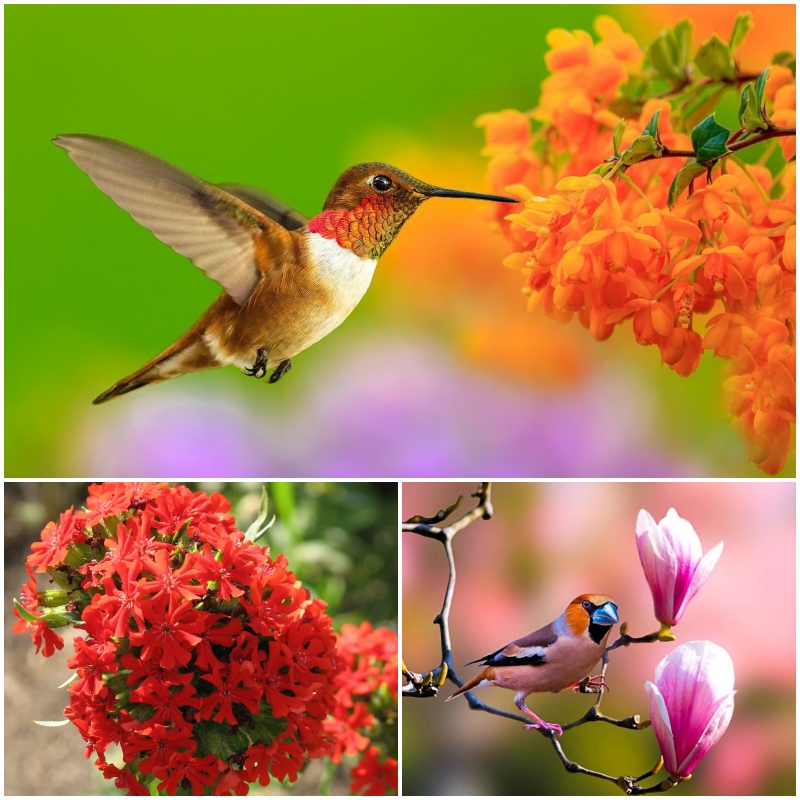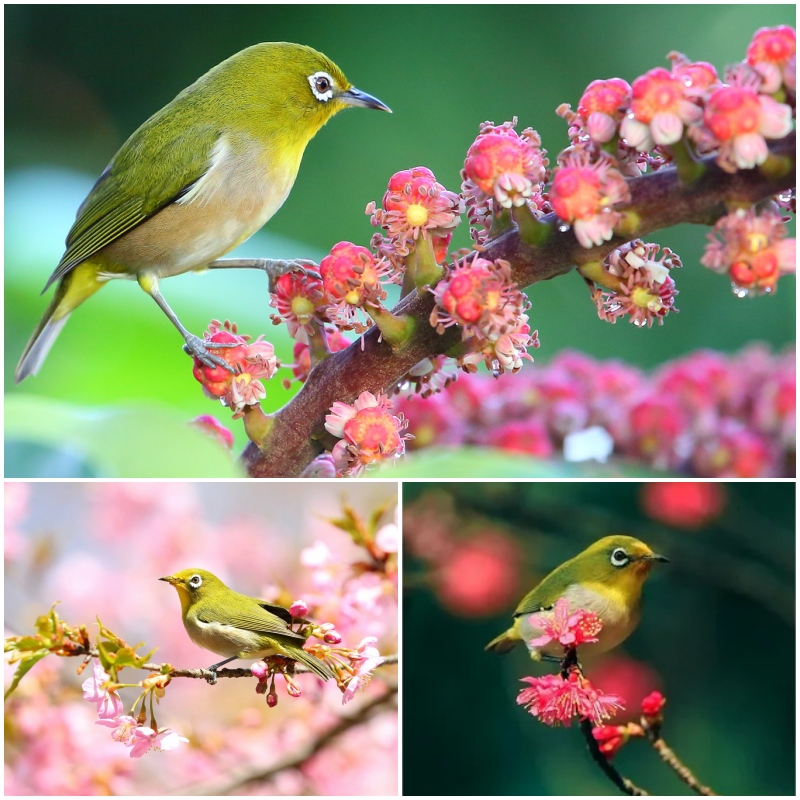
Are you looking to add some blue flowering shrubs to your garden? While hydrangeas are a popular choice, there are many other options available that can bring more color to your space. Blue flowers are unique and eye-catching, making them a great addition to any garden. Although red shrubs are more common, blue flowering shrubs can add a pop of color to your garden. In this article, we will introduce you to some of our favorite blue flowering shrubs. We will provide you with their scientific names, hardiness zones, and growth size. So, let’s dive in and explore these stunning blue flowering shrubs with pictures for each. Remember to keep Bellflower, one of our favorite blue flowering shrubs, well-watered during the warm season, but avoid waterlogging.

While not technically a shrub, the Bellflower closely resembles many blue-flowering bushes. Its foliage is thick and it has numerous slender stems emerging from the root system, giving it a shrub-like appearance. The blossoms of the Bellflower are unique for their bell shape and pale blue or blue-purple coloration. The Harebell and Bluebell flowers are actually types of the Bellflower, as they also have bell-shaped blue blooms. While the Bellflower can flourish in both gardens and pots, some varieties can be invasive and take over your yard. Trimming off deadheads can help control its growth. The Big-Leaf Hydrangea thrives in moist environments so ample watering and even the occasional indoor “bath” can keep it healthy.

It’s quite typical to grow hydrangea in your garden or yard because this shrub can reach hedge-like sizes and blooms throughout the summer. The Big-Leaf Hydrangea, as the name suggests, features large leaves with serrated edges. It is easy to cultivate, but it might not blossom if it doesn’t receive sufficient sunlight or if you prune it too late in the season. Although the Hydrangea usually blooms as a white flowering shrub or has pink blossoms, blue flowers can be achieved by highly acidic soil. Certain types of hydrangeas are more likely to produce blue flowers, which can vary in hue from pale to deep blue. The Big-Leaf Hydrangea is a deciduous shrub that will shed its leaves in the fall and grow them back in the spring. Another plant that can add beauty to your garden is the Blue Butterfly Bush. It produces flowers that look like butterflies and can continue to bloom until autumn.

This particular type of tropical shrub is versatile enough to be utilized either as an outdoor or indoor plant. Despite its potential to grow up to eight feet tall, it can be easily managed by planting clippings in a pot and carefully trimming them to reach your desired size. It also thrives as a four-foot-tall shrub. The Blue Butterfly Bush produces exquisite delicate blooms that transform into large clusters of blossoms. The flowers themselves are a soft shade of blue and bear a striking resemblance to the wings of a butterfly. Their beauty attracts a wide variety of insects, including bees, butterflies, and even hummingbirds. While its scientific name is Rotheca myricoides, it is more commonly known as Clerodendrum ugandense. Previously, it was believed to belong to the South American Clerodendrum family, hence the initial classification. To ensure optimal growth and flowering, it is crucial to regularly remove any weeds from its vicinity and provide adequate watering to the Blue Cardinal Flower.

The Blue Cardinal Flower, also known as the Great Lobelia or Great Blue Lobelia, is a plant that boasts blue blooms and can resemble a shrub when several of them are planted together. With a dense, woody base and long, upright stems holding the flowers, this plant adds a unique touch to any yard. Its flowers, which are either bright blue or violet, grow around the central stem and are accompanied by narrow, lance-like leaves. With five petals that are about one inch in length, the upper two petals curl back while the lower three extend downwards, making this flower akin to a Snapdragon. To ensure the Blue Cardinal Flower blooms abundantly at home, it requires direct sunlight but should be protected from the intense heat of midday sun.
The Blue Plumbago is a type of shrub that boasts sprawling vine-like branches. It requires more space compared to other shrubs due to its tendency to creep sideways in your garden. What sets it apart from other flowering plants is its longer blooming period, which can last for an entire year. The Blue Plumbago produces small clumps of delicate pale blue or bluey-purple flowers, each with five petals. If you live in cooler areas, you can consider using the Blue Plumbago as a potted plant. However, you need to ensure that the container is large enough to accommodate its fast-growing nature. Pruning and providing shelter during colder temperatures are other ways to help a potted Blue Plumbago thrive. Another perennial shrub to consider is the Blue Potato Bush, which can grow up to 2 meters high and features beautiful blue-purple flowers.

The Blue Potato Bush, also referred to as Paraguay Nightshade and Blue Solanum Shrub, is a perennial shrub that belongs to the same family as vegetables such as eggplant, tomato, and potato. However, unlike these edible plants, the Blue Potato Bush is toxic and not suitable for a vegetable garden. Despite this downside, the Blue Potato Bush is a stunning addition to any front garden and can be shaped into either a tree or hedge with proper pruning. The blooms are small and blue with a beautiful star-like pattern adorning the inside of its petals. It can also be grown indoors as a potted plant. One thing to be cautious about is its red berries, which are poisonous and appear after the Blue Potato Bush’s flowers have bloomed. If you have children or pets, it’s important to ensure they stay away from the plant during this time. Taking care of the Blue Rose of Sharon involves regular watering, especially during hot weather.

The Blue Rose of Sharon is a beautiful plant that belongs to the popular Rose of Sharon family. Unlike other strains, this one is sterile and cannot produce working seeds. Nevertheless, it boasts stunning green foliage and breathtaking blooms that can transform your garden into a fairytale-like paradise. Between mid-summer and autumn, you can enjoy the Blue Rose of Sharon’s delicate pale blue flowers that measure around four inches in diameter. Each bloom lasts for only one day and features a lace-like appearance with layered petals. Aside from its beauty, the Blue Rose of Sharon is also a structural shrub, making it an ideal choice as a hedge or yard border. This deciduous bush sheds its broad leaves every fall, so you can expect to witness its stunning transformation every year. If you’re looking for this plant in garden centers, you may find it under the name “Blue Chiffon.” Keep in mind that the flowers of the Rose of Sharon family can vary in color, ranging from light blue to lavender, depending on the specific strain. Finally, if you plan on growing Bluebeard, make sure to plant it in an open area that’s protected from the wind.

The Bluebeard plant, also known as Blue Mist or Blue Spirea, blooms later than other plants and can be seen from late summer through the fall. The plant has large, dense leaves that form a thick base, with flowering stems that rise above. The leaves emit a pleasant fragrance similar to eucalyptus. The flowers are small and come in pale blue or white hues, grouped every few inches around the central stem, with lower clumps blooming first. As the flowers open up, long blue whiskers protrude, giving them a thistle-like appearance. The Bluebeard plant is a magnet for butterflies and hummingbirds as summer fades away. Blue Rhododendron requires moist soil, especially during the growing season and summer months, and should be watered using soft water.

The Blue Rhododendron, also known as the “Blue Tit” Rhododendron, is a unique variant of the traditional shrub that produces blue-coloured flowers. Typically utilized as a border or hedge in outdoor spaces, this evergreen has dark, small leaves that remain throughout the year. Due to its dense and easily spreading nature, it’s important to prune the Blue Rhododendron regularly. The blossoms of this species grow in clusters of three or five and have trumpet-like shapes that start off as a pale blue-purple colour before deepening into a darker shade of blue. Another hardy perennial with blue flowers is the Blue Wild Indigo, which can reach heights of 65 cm to 2 meters.

The Blue False Indigo may not technically be classified as a shrub, but it does have a bushy base composed of large, dense leaves. This member of the pea family showcases its small flowers through several thin stalks. Although it is not the true source of indigo, its juices can sometimes be used as a substitute. Its blossoms come in a pale blue to blue-purple color and bear resemblance to Pea plant flowers, displaying three to four main petals that curve away from each other. When newly sprouted, Blue False Indigo shoots may resemble asparagus, but it is important to note that this plant can be toxic to humans, especially children, and should not be ingested. On the other hand, California Lilac can make a beautiful addition to any garden or city park with its dense inflorescences of blue flowers.

The California Lilac, also known as Soap Bush or Ceanothus, is a hassle-free blue flowering shrub that is easy to grow. It can flourish without much effort and its growth rate is surprisingly fast. Its resemblance to other Lilac bushes lies in its clusters of tiny flowers, forming bottle brush shapes all over the plant. These slender trumpet-like flowers combine to create stunning cone-like blooms. The California Lilac offers a range of blue colors, from darker blues to paler purple-blue hues that attract birds, bees, and butterflies. It can be used as a standalone shrub or tree or partial yard barrier. The Chaste Tree is another beautiful shrub with elegant foliage that produces clusters of purple flowers in summer.

The Chaste Tree resembles a Lilac bush, but it thrives in areas with hotter summers. Its leaves are long and spiky, and it bears cones of white, pink, or purplish-blue flowers, although they don’t grow as densely as Lilacs. Chaste Trees can be planted alone or used as a border around a yard. Some people believe they have medicinal properties that can help with premenstrual syndrome, but there is no definitive proof to support this claim. Another beautiful plant is Dwarf Morning Glory, a herbaceous perennial with striking blue flowers that contrast nicely with its olive green leaves.

The Dwarf Morning Glory is a smaller variant of the Morning Glory vine that can serve as a petite shrub or container plant. Its stems retain the vine-like characteristic of its larger counterpart, which causes the foliage of the Dwarf Morning Glory to grow dense and woody. The flowers are trumpet-shaped and can spread up to two inches in diameter. Unlike other blue bloomers, the blossoms of the Dwarf Morning Glory are a regal blue hue that adds a distinct pop of color to any garden. Each flower features a golden and white circle at its center, which accentuates the vivid blue edges. During summer, Lily of the Nile produces an abundant number of blooms that typically last around eight weeks.

The Lily of the Nile is an impressive flowering plant that has a bush-like base. It is perfect for those who are looking for a smaller, bushy plant with blue flowers to place in the front part of their garden or as an interior potted plant. The flower comes in various shades of blue, white and even white with blue stripes. The closed blossoms look like pea pods, but when they open up, they transform into delicate and thin star-shaped blooms. The flowers grow in a rounded clump on thin stalks that emerge from the dense foliage. Not only are all parts of the plant very fragrant, but it is also highly valued for its essential oils and as a wonderful fragrant dried flower.

This particular type of plant resembles a wise sage and is smaller in size, making it a great option for gardens or yards. The plant’s foliage is woody and the stems are square-shaped with small flowers. Although typically more purple than blue, the Russian Sage still adds a beautiful touch to any garden. If you prefer a more royal blue hue, the “Blue Spire” variation is also available. The plant emits a pleasant aroma similar to lavender or other sages when crushed. When fully grown, the flowers on each stem form a triangular shape for a more spaced-out appearance. Salvia, commonly known as sage, has a high tolerance for cold weather and can be used for medicinal, culinary, household, and gardening purposes.

This plant, also referred to as sage, shares many characteristics with the Russian Sage. It can flourish in a garden setting as a border plant or even in a pot. The Salvia produces flowers from summer to fall and has the added benefit of attracting bees and butterflies. The plant’s dense base gives rise to spiky, vertical stems that produce dark blue to dark purple flowers, although some variations may be red or pink. Each stem boasts a bunch of small blooms surrounded by vibrant bracts that either match or complement the flower hues. Another plant to consider is the Spiked Speedwell, which features a bloom season that begins in June and extends for roughly 40 days.

The Spiked Speedwell is an easy-to-care-for plant that can be grown in various locations such as gardens, rocky terrain, or even containers. Despite not being a shrub, it can produce dense foliage resembling one when multiple plants are grown together. Its spiky flower formations with small bright blue or bluey-purple flowers create a bottle-brush appearance, similar to that of a Lilac bush. The plant is a fast grower, but not invasive, which means that you can enjoy a sudden burst of it from any sowed seeds. Luckily, if you desire a blue flowering shrub for your garden, there are numerous options available. Some of these shrubs may have a violet hue, but many are genuinely blue and can add aesthetic value to your space. You can also select plant-like shrubs with blue flowers if you do not want to commit to a genuine shrub. Regardless of your choice, incorporating blue flower bushes can enhance your garden’s beauty.





